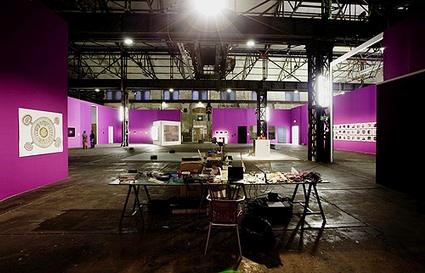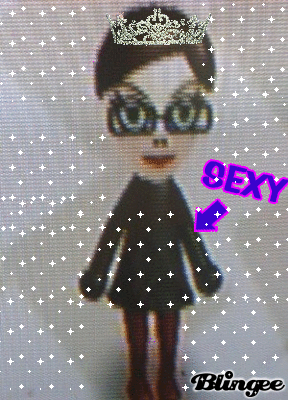
========================================================================
/tmp/lab announces the second Hacker Space Festival
(Paris, 26-30 June 2009)
========================================================================
Hacker Space Festival 2009 | Call For Proposals
In 2008, we organized HSF[1] on the spot, as an ad-hoc meeting for
hackerspaces-related networks, technical and artistic research emerging
from them and social questionning arising from them. This sudden
experiment proved to be a huge success, as much as on the
self-organizing level as on the participants and meetings quality, as
well as the emotionally-charged ambient, the kind of which you make
fond memories.
The 2008 edition generated a strong emulation in France, from its
historical role as the first official hack meeting there, and in Europe
with the subsequent creation of the Hacker Space Brussels[2], the
rapprochement with The Fiber in Amsterdam and the hackerspaces.org[3]
network. Initiatives of hackerspace openings in Grenoble or Lille, or
the upcoming FrHack[4] conference show an actual enthusiasm in the
French hackers community that was doomed to the "underground" not so
long ago. We salute these initiatives and their diversity!
Soon enough, we wanted to reiterate the HSF experience : however, it
was out of the question to institutionalize this temporary autonomous
zone, nor make it an ersatz of the previous edition, nor even to wrap
it into an "elite" or "underground" aura. On the opposite, we ardently
desire; and especially to explore further, in all directions some
lesser known domains (see below) et foster meeting and sharing around
experiences at the confluence of art, technology and politics.
The world financial crisis, the decay of democracy in Europe, the
obscurantism, paranoia and lack of culture presiding over legislation
(Internet and Reaction... Err... Creation Law[5][6]) seem a fertile
environment for the sensible development of new (social...) life forms.
Quick! Let's rest for a few days in jubilation and ecstasy to take a
deep breathe of freedom under the indelicate smells of the medicine
factory nearby!
For if the public space is shrinking to oblivion, where any side-step
becomes suspect, and that, from an early age (deviant behavior
detection in nursery school), where moving without a mobile phone
becomes suspect (hello you Julien Coupat[7], a French political
prisoner in France!), there's a domain that the Leviathan would have a
lot of trouble to contain, and for a reason: that of sensitivity. Even
the desperate attempts of the State to block the free and premonitory
expression of sense (hello you Demeure du Chaos![8]) cannot do anything
against a loud laughter or a knowing glance, a sensual kiss or an
explosion of colors.
Sensitivity, we could say, is what is left to a human being when she
has nothing anymore, and differenciates her from the body corporate or
the institution, that are, in essence, devoid of it. Therefore, Art
definitely remains the public space to share between humans, and only
between us. And if it the last one to share, we propose to explore it
and take it over during the upcoming edition of the Hacker Space
Festival, from the 26th to 30th of June, 2009 at Vitry sur Seine[9].
========================================================================
Keynote Speakers: Sergey Grim and Larry Fake with Eric Schmoudt
Groogle Summer of Crode, Survivor style
"VLC, I vote against you because you really fucked up when..."
========================================================================
== W A N T E D =========================================================
Focus on solutions rather than problems.
* The Final (Hardware) Frontier: Open FPGA Cores, Reverse Engineering
* Designer Religions and Creative Beliefs Systems
* WiFiDoors & WiFi System-on-Chip controllers firmware hacking,
infection & backdooring
* Telecom Core Network Equipment Reverse Engineering: MSC, STP,
Switches, ...
* Algebraic Attacks and Modern Cryptography Attacks
* Autonomous, Parasitic and Viral Drones
* Enhanced or Infected Reality Swarms
* Auto-Builders / Self-Fabrication
* Embedded OS breakins stories & recipes
* Actualization rather than mere concepts
* FPGA & ASIC hacking / backdooring
* Cloud+Privacy+Open Source: O Brave New World?
* Explosion-Proof clothing
* Radio Appz & Hackz: Mesh @ RF Layer 1-3
* Database & Privacy
* Problematic & Ethical Open Source/Content Licenses
* Institutional Relationships: Lobbying or Licking?
* Non Lethal Protection (anti-taser vests?)
* Survival in the Age of the Ministry of Immigration and National
Identity
* Mental asylum improvised visit
* Open Source Legacy Media(TM) Production Solutions (TV, Radio, Press,
DRM)
* Gas Sensors & Environmental Benchmarking
* Building Hackerspaces Without Money
* Milsatcomm hacking: Military satellites shots, broken birds in the
sky
* Other research topics on security and insecurity
* Academics and Hackers
* Organics and Fermentation
* Clean Food in Tainted Environment
* Low Impact Energy & Recycling
* Media Sandwich: layers of crap makes good food?
* Deconstructing Carla Sarkozy
* Knitting DIY Factory (jazzy, eh?)
* Signs of life among industrial wasteland
* Hallucinogenic & Computing: Can you Code on Acid?
* Mesh Networking (Wireless BattleMesh Royal!)
* Legal Sabotage: When Democracy Needs You
And anything that does not fit.
========================================================================
== P R O P O S E =======================================================
Send you contributions to HSF2009-CFP@lists.tmplab.org
+ Type of the proposal:
1. conference (45min. presentation + 10min. for questions)
2. workshop / demo (30min. à 2 heures)
3. installation / performance (music, plastic, sound, video)
Lightning talks can be proposed and organized until the last moment,
according to available space and schedule, in the form of BarCamps or
Blitz Conferences.
+ Required Information:
* Title of the presentation
* Type (see above)
* Language : French or English
* Name of speaker(s)
* Affiliation (organization / company)
* Short biography
* Abstract (5 to 10 lines)
* Topics / Keywords
* Includes a demo? YES | NO
* Release during the festival? YES | NO
* Internet connection required? YES | NO
+ Acceptable Formats
* Open Document
* PDF
* Plain Text
* RTF
+ Agenda
* beginning of proposals : now
* end of proposals : 01 May 2009
* selection notification : 07 May 2009
* publication of program : 15 May 2009
+ Evaluation criteria for proposals:
1. Innovating Topic
2. Open Technology
3. Demonstration / Live Act
4. DIY Reproducibility
5. Fun Potential
The Programming Committee resembles that of last year
See :
http://hackerspace.net/committee========================================================================
== V E N U E ===========================================================
/tmp/lab
6 Bis rue Leon Geffroy
94400 Vitry sur Seine
France
http://hackerspace.net/directions========================================================================
== P A R T I C I P A T E ===============================================
Email :
http://lists.tmplab.org/listinfo.cgi/hsf2009-talk-tmplab.orgCFPmail: HSF2009-CFP@lists.tmplab.org
IRC :
irc://irc.freenode.net/frlabJabber :
xmpp:hsf2009@space.cepheide.org?joinWiki :
http://hackerspace.net/hsf2009========================================================================
== L I N K S ===========================================================
The CFP is available online at
http://hackerspace.net/cfp[1]
http://hackerspace.net/hsf2008[2]
http://hsb.wikidot.com/[3]
http://hackerspaces.org/[4]
http://www.frhack.org/[5]
http://jaimelesautistes.fr/[6]
http://laquadrature.net/[7]
http://fr.wikipedia.org/wiki/Julien_Coupat[8]
http://www.demeureduchaos.org/[9]
http://hackerspace.net/_______________________________________________
Tmplab mailing list
Tmplab@lists.tmplab.org
http://lists.tmplab.org/listinfo.cgi/tmplab-tmplab.orghttp://www.tmplab.org (Blog)
http://tinyurl.com/4aob9u (Calendar)
http://www.tmplab.org/wiki/index.php (Wiki)
http://embed.mibbit.com/?server=irc.freenode.net&channel=%23frlab (IRC
french)
http://embed.mibbit.com/?server=irc.freenode.net&channel=%23tmplab (IRC
english)


































